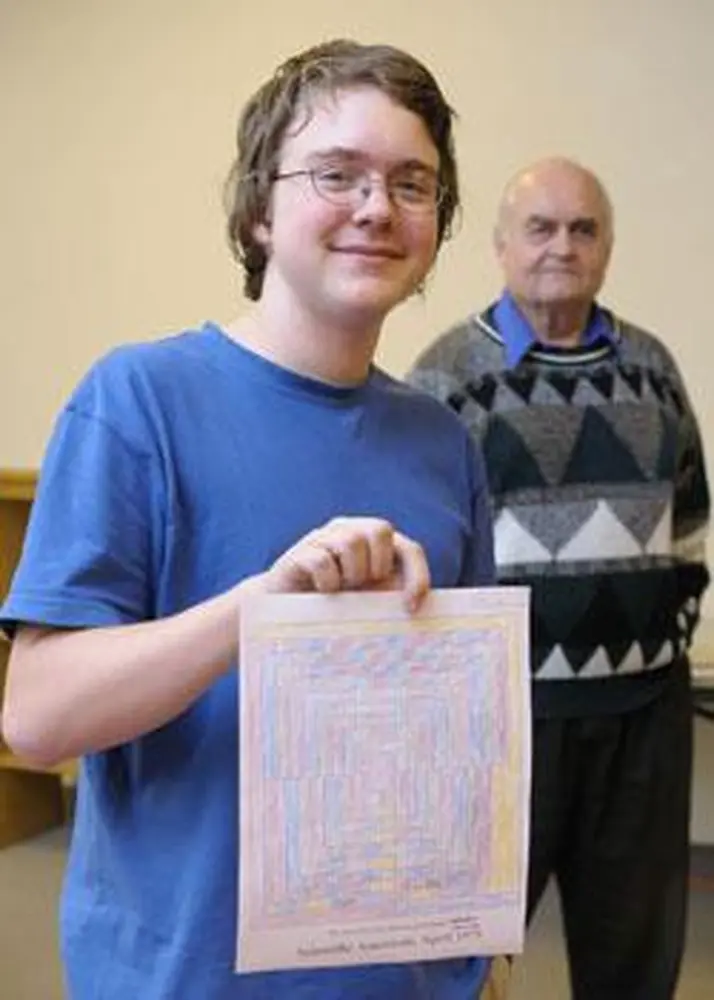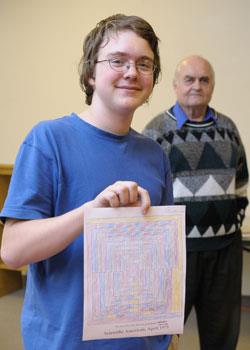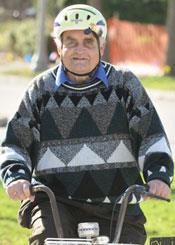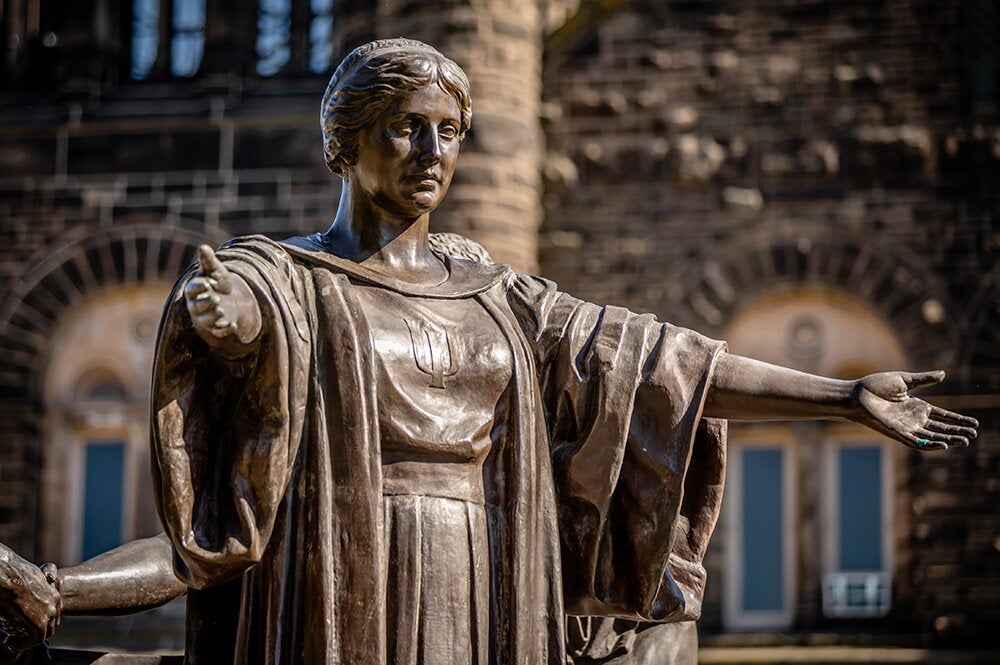

The students in Urbana High School’s math club were challenged in early April to do something they probably hadn’t done since first or second grade. They did coloring.
However, this coloring task was being led by an eminent LAS mathematician, Wolfgang Haken, and it involved one of the most famous math problems in history—the four-color theorem. In its simplest form, this theorem says that any map can be colored using only four colors. But here’s the catch: Any two adjacent countries or states must be of different colors. (If two countries meet at only a single point, they are not considered adjacent. They must share a border.)
The four-color theorem dates back to 1852, but no one had been able to prove it mathematically for over 100 years, despite a myriad of attempts by some of the greatest mathematicians of the 20th century. That’s why Haken and fellow University of Illinois mathematician, Kenneth Appel, made news across the world when they finally proved the theorem in 1976, using the University of Illinois’ Cyber supercomputer.
Haken was born in Berlin during the turbulent period between the two wars. His family lived in a middle-class suburb of Berlin, and his father, a physicist by training, was an outspoken critic of the Nazis. The family lived in constant fear that his father would be sent to a concentration camp for his views, but his father came through unscathed.
Haken’s first fascination was with physics—an interest he traces back to 1941 when he spent time in traction with a broken leg at a hospital in Poland, not far from the Soviet border. He had been taken out of Berlin because of the bombing; and on his 13th birthday, only one day before the Germans invaded the Soviet Union, his father sent him the book, Physik ohne Zahlen (Physics Without Numbers), by Emil Braunweiler.
Being so close to the Soviet border, most of the hospital evacuated, but Haken could not be moved because of his leg. Therefore, he spent his time immersed in his book.
“You might expect that this time would be excessively boring, but it was one of the happiest times of my life because of that book,” Haken explains. “I was fascinated, and when I came home, I wanted to learn more.”
After the war, Haken began studying physics at the University of Kiel; and at 17, he was one of the youngest students on campus. But even though he was fascinated with the foundations of physics, none of the teachers shared his enthusiasm and he received little helpful guidance. So he turned his focus to mathematics, eventually receiving his doctorate in 1955.
In the early 1960s, not long after the Soviets launched the first satellite, the United States was desperately looking for physicists and mathematicians, so Haken landed a visiting professorship at the U of I in 1962. The position became a full professorship in 1965, and he has been on campus ever since.
Haken says his interest in the four-color theorem goes back to a lecture by Heinrich Heesch that he heard in 1949. He did some work on the problem in the 1960s, but he realized that it was going to take a powerful computer to make the breakthrough. Thus began his collaboration with Kenneth Appel, a U of I math professor who also happened to be an expert in computer programming.
“Kenneth is as fast as I am slow,” Haken says with a smile. “I am very slow moving, and he is sometimes nervously fast. But we would not have gotten the thing to work without his pushing.”
Haken stresses that he and Appel do not deserve full credit for solving the four-color theorem. “We did the last 20 percent,” he says. “We were the fifth generation of people working on the problem, so four-fifths had been done by others.”

When Haken and Appel announced their proof of the theorem in 1976, some greeted it with enthusiasm and others with scorn. Haken recalls being part of a documentary on the theorem being filmed at a New York college in 1981. A math professor at this college would not even let his students talk with Haken or Appel for fear of their minds “being contaminated,” he says.
Much of the controversy centered over whether a computer-aided mathematical proof was legitimate.
“One person told me, quite correctly, ‘How can a computer be part of a mathematical proof?’” Haken says. “A computer is a physical apparatus.” To purists, you must be able to check a proof by hand, which is not possible with the computer. If you were to put the computer’s proof on paper, it would number millions of pages.
The map that Haken passed out to Urbana High School students in April was an April Fools’ joke created in 1975 by Martin Gardner, a well-known writer for Scientific American magazine. In the joke, the magazine claimed to have found a map that could not be colored with only four colors—“exploding” the four-color theorem.
Haken says some math professors at the time did not appreciate the joke. After seeing Scientific American, one professor told his class that the four-color theorem had been disproved and even passed out the magazine’s map. The very next day, one of the professor’s students—a failing student at that—showed up at his door with the map completely colored using only four colors.
Haken, on the other hand, appreciated the joke. He also welcomed the controversy. “I’m happy that our work made people at least think about the foundations of mathematics. People got excited about it, and that’s the best you can expect.”


